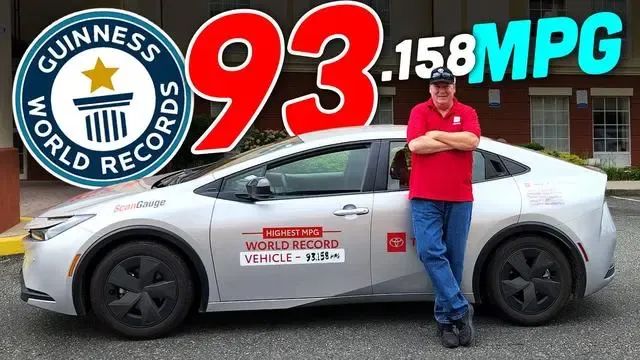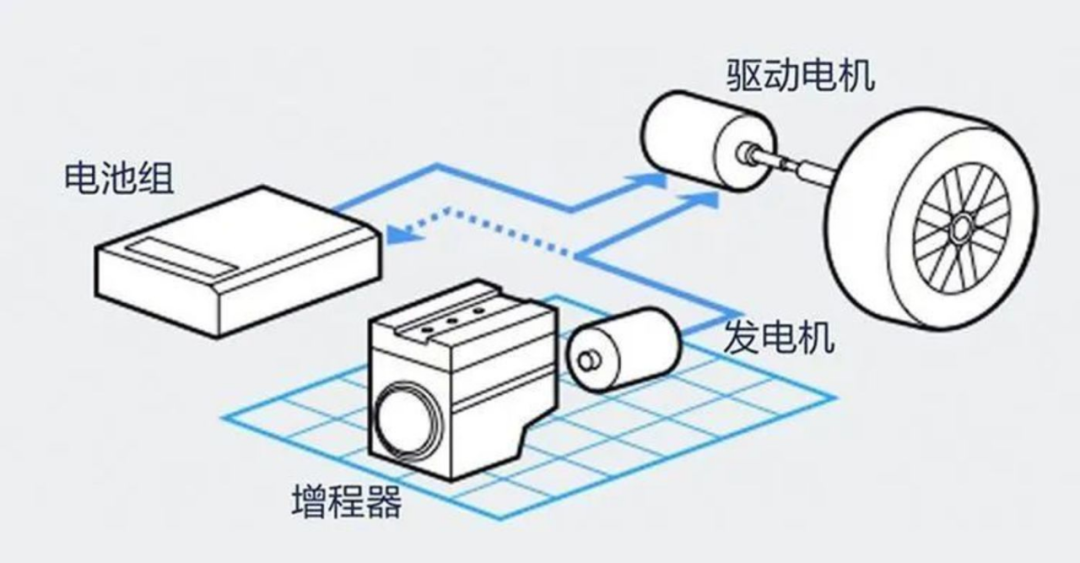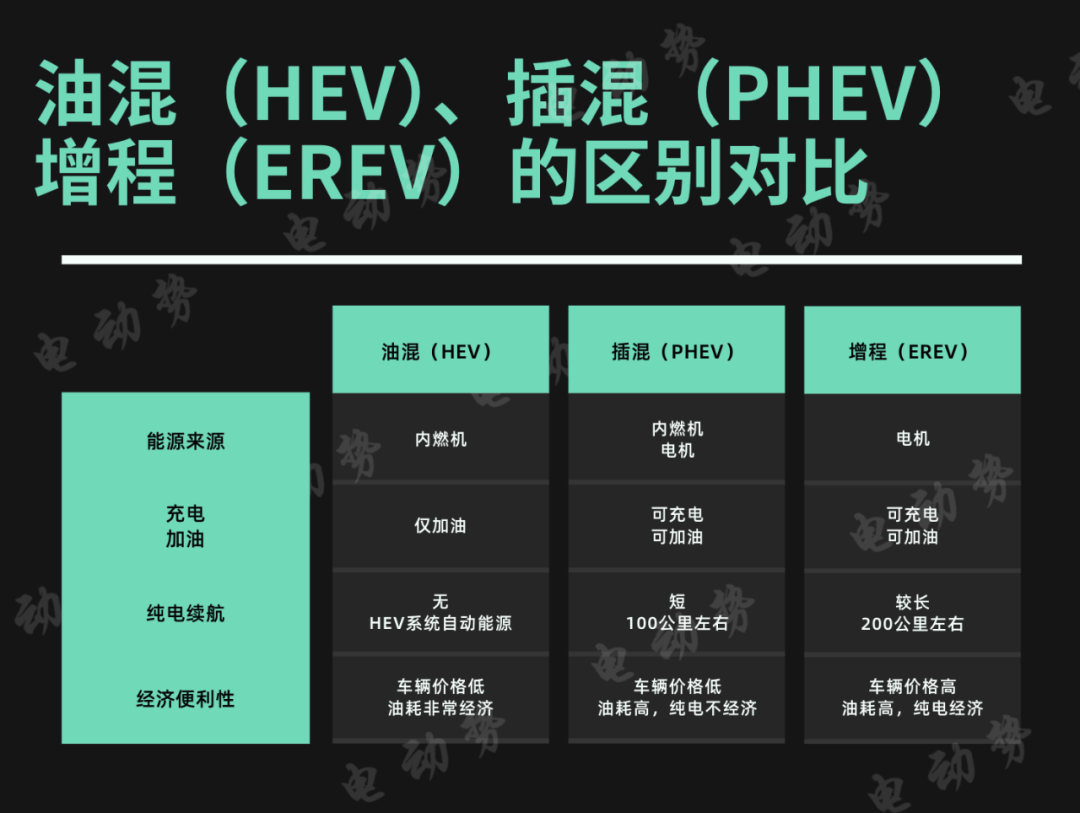Is the declining hybrid technology still in its golden age?
![]() 09/27 2024
09/27 2024
![]() 542
542
New things are wonderful, but when embracing them, we also need to calmly consider what true value really is.
Body
Recently, during our research on the global automotive market, we found two interesting sets of data.
One set comes from the EU market. In August, registrations of plug-in electric vehicles in the 27 EU member states declined by 22.3%, while sales of hybrid vehicles increased by 6.6% against the trend.
The other set of data comes from the US. According to statistics, the sales of hybrids in the US market this year are likely to exceed those of pure electric vehicles again.
I wonder if you feel as curious as we do when you see these two sets of data.
Isn't it agreed that pure electric vehicles are the future? Why are hybrids performing more strongly in major developed countries globally?
Moreover, it's interesting to note that the countries where hybrids sell well are those with more developed automotive cultures and more mature car-buying experiences among residents.
Isn't it counterintuitive? What's going on?
Well, let's start with a conclusion.
Although electric vehicles are indeed appealing, the enthusiasm for them in the domestic market is largely driven by non-technical factors. Technically, hybrids remain a more mature choice as the mainstream powertrain technology for automobiles. At least, they have significant advantages over electric vehicles in terms of fundamental factors such as safety, stability, and peace of mind.
It can be said that the strength of hybrids has been significantly underestimated in the domestic market.
Today, let's talk about the advantages of hybrids that you may not know.
Where should we start?
Let's begin with the true global performance of hybrid technology.
A transitional technology that is actually the most mature
In the past two years, there's a consensus in the automotive industry that you've probably heard before:
Pure electric vehicles are the future, while hybrids are just a transition.
Many consumers have chosen pure electric vehicles under this influence. However, some consumers are confused because after using pure electric vehicles for some time, they find that this "future" doesn't seem as ideal as expected.
Why is that?
Because many people misunderstand the meaning of that statement. Its true meaning should be: pure electric vehicles still have a way to go and belong to the future beyond tomorrow. Hybrids are actually the most mature technology currently available.
In fact, have you noticed that the most active players in the pure electric market are often weaker or emerging brands?
Frankly speaking, these brands were either making low-end cars or had no car-making experience at all. But through technological integration and software-level consolidation, they managed to produce electric vehicles in just a few years.
On the other hand, traditional automakers, those who invest billions of dollars in research and development every year, such as Geely, Great Wall, and BYD in China, and Toyota, BMW, and Mercedes-Benz internationally, are vigorously promoting the development of hybrid models.
Isn't that interesting? Why is that?
Could it be that traditional automakers can't make pure electric vehicles due to high barriers to entry? That doesn't seem logical since emerging brands can quickly produce them, so traditional automakers should also be capable.
In fact, an important reason is that hybrids are still a more reliable choice for ordinary consumers at this stage compared to pure electric vehicles. Technically, hybrids are also safer, more stable, and more economical.
For example, safety. Today, battery self-ignition remains an unavoidable topic for almost any electric vehicle manufacturer, regardless of whether their products use lithium iron phosphate or ternary lithium batteries. In contrast, hybrids, especially oil-electric hybrids, have a significantly lower probability of spontaneous combustion. A typical example is Toyota, which has sold 27 million HEVs globally, but there have been zero incidents of explosion or electric shock caused by accidents.
Take stability, for instance. As an active chemical substance, the stability of batteries can be affected by external temperature, and no electric vehicle can escape the issue of reduced range due to lower temperatures. Therefore, the driving range of electric vehicles is actually unstable. Another aspect is operational stability. Compared to hybrid car owners, electric car owners often cannot focus solely on driving and must pay attention to range and charging issues.
Then there's economy. Hybrids typically have smaller battery capacities, resulting in lower overall vehicle costs and more economical purchase prices compared to pure electric vehicles. Additionally, some hybrid models achieve extremely low fuel consumption through optimized hybrid systems.
This explains why hybrids significantly outperform pure electric vehicles in sales in Europe and the United States, where automotive cultures are more developed.
Compared to Europe and the United States, automobiles have not been a part of ordinary Chinese households for very long, and China's automotive culture is not as deep-rooted. As a result, some superficial concepts have found a market, such as emphasizing features like refrigerators, tray tables, and seat angles over more fundamental factors like safety, stability, and economy. While these features are not necessarily bad, we should also consider the more fundamental aspects when evaluating vehicles.
Which hybrid technology is the best?
It seems that hybrid technology is more capable than we thought.
However, hybrid technology has multiple routes, including oil-electric hybrids (HEV), plug-in hybrids (PHEV), and extended-range electric vehicles (REEV). Each has its complexities, and it can be challenging for ordinary consumers to navigate them.
But don't worry. We'll explain them in easy-to-understand terms.
Let's start with oil-electric hybrids, which we believe offer the most advantages.
What are oil-electric hybrids?
Simply put, they are vehicles that run on gasoline but also have an electric motor.
You might wonder why both an internal combustion engine and an electric motor are needed.
Good question. Many people don't know that a vehicle consumes the most fuel during start-up. Surprising, isn't it?
Modern cars often weigh over a ton, and starting them requires a sudden strong push, resulting in high fuel consumption at that moment.

Here's where the electric motor excels. Due to its technical characteristics, the motor has strong torque. If you're wondering what torque is, it's not important. Just know that the motor has immense instantaneous power. During vehicle start-up, the motor's advantages are evident, providing strong instantaneous power while being energy-efficient compared to the internal combustion engine.
If the motor is so powerful, why is an internal combustion engine still necessary?
That brings us to the advantages of the internal combustion engine. Have you noticed that electric vehicles consume more energy on highways, while fuel-powered vehicles maintain a balanced consumption? That's because while the motor has strong instantaneous power, it requires continuous energy output to maintain speed. In contrast, the internal combustion engine operates most efficiently at a constant speed with the assistance of the transmission, making it more energy-efficient.
Isn't it interesting how different the characteristics of internal combustion engines and electric motors are?
This is where hybrids shine. The electric motor is ideal for starting, so hybrids use it to assist during start-up, saving fuel. For highway driving, the internal combustion engine takes over, providing stable and energy-efficient performance. Even better, when the vehicle slows down, the battery can recover kinetic energy, converting deceleration resistance into electrical energy for the motor. Since oil-electric hybrids primarily rely on the internal combustion engine, the battery pack is smaller and doesn't require charging.
In summary, oil-electric hybrids combine the stability and safety of fuel-powered vehicles with the energy efficiency, peace of mind, and economy of electric vehicles.
Let's take Toyota, a leading oil-electric hybrid technology company, as an example.
Recently, an American drove a Toyota Prius across the United States from Los Angeles to New York, setting a Guinness World Record for fuel economy with an average fuel consumption of just 2.52 liters per 100 kilometers over the 5,200-kilometer journey.

Of course, extreme fuel efficiency isn't the only advantage. Safety is crucial. Toyota's hybrids are sold in over 90 countries and regions worldwide, with over 27 million owners. Remarkably, there have been no incidents of electric shock, battery explosion, or combustion caused by vehicle accidents in any Toyota HEV globally.
Now, do you understand why hybrids are considered a more mature technology with superior overall performance compared to electric vehicles?
Let's move on to other hybrid technology directions.
What are plug-in hybrids?
In short, they can run on both gasoline and electricity.
That's right. Plug-in hybrids have both an internal combustion engine and an electric motor, and they also have a larger battery pack compared to oil-electric hybrids. Both power sources can independently drive the vehicle.
However, since the primary driving force is fuel, plug-in hybrids typically have smaller battery packs, with many vehicles offering a range of around 100 kilometers on electric power alone.
Charging and refueling might seem cumbersome at first glance, but plug-in hybrids are designed for flexibility.

For daily commuting, plug-in hybrids can be charged once a week and driven as short-range electric vehicles. For longer trips, they can switch to fuel-powered driving, solving the range anxiety issue.
Unfortunately, the fuel economy of plug-in hybrids when running low on electric charge is often not as good as automakers claim, so there's still room for improvement in terms of overall economy.
What about extended-range electric vehicles (REEVs)?
Like plug-in hybrids, they can run on both gasoline and electricity.
However, REEVs are driven by an electric motor, so their energy comes from the electric motor. When the battery pack is nearly depleted, the internal combustion engine starts generating electricity to power the motor.

It's like the vehicle carries a "generator," constantly converting fuel into electrical energy to power the motor and drive the vehicle.
As a result, REEVs can have larger battery packs, offering an electric range of up to 300 kilometers, which is sufficient for short-distance travel. For long-distance travel, they have fuel-powered generation as a backup. A representative automaker in this field is NIO, which has achieved remarkable success with its excellent product design.
To help you better understand the differences between these three technologies, we've created an infographic that you can save and refer to.

In summary, among the three main hybrid technology routes, oil-electric hybrids are more similar to fuel-powered vehicles but offer better stability, safety, and energy efficiency due to more mature technologies. Plug-in hybrids have the advantage of flexibly switching between energy sources to meet different travel needs. REEVs combine the best of both worlds, offering an electric driving experience while ensuring range with fuel-powered generation.
Overall, compared to electric vehicles, all three hybrid technologies have their unique advantages.
Hybrids are not fading away; they're in their golden age
By now, you might be wondering why hybrids, despite their many advantages, don't receive as much attention as electric vehicles.
An important reason is that China has invested significant resources in promoting electric vehicle technology as part of its strategic plan to support the automotive industry.
However, as China gradually establishes a leading position in the new energy sector, electric vehicles are no longer the only path forward, and diversified incentives are bound to follow.
For example, in August 2023, the Ministry of Industry and Information Technology, together with seven other ministries and commissions, issued a policy to stabilize fuel vehicle consumption. The policy encourages enterprises to explore hybrid and low-carbon fuel technologies while maintaining a green and low-carbon orientation, promoting the steady development of the fuel vehicle market.
Locally, cities like Guangzhou have also announced that energy-efficient vehicles, including hybrids, can directly obtain free blue license plates.
From the strong sales trends of hybrids globally and subtle shifts in domestic policy directions, it's clear that hybrid technology is not fading away but is actually in its golden age.
Have you noticed a phenomenon?
In recent years, new energy vehicles have garnered significant attention, and traditional automakers like Toyota and Mercedes-Benz, as well as domestic players like Great Wall and Geely, were once deemed obsolete overnight.
However, over time, we've seen that traditional automakers continue to demonstrate their industry standing through steady development.
Take Toyota, which we've mentioned several times. On the surface, Toyota appears to be a traditional automaker, but upon closer inspection, it's doing anything but traditional things. Its technological layout is more aggressive than that of so-called new forces today. Toyota has a thicker and more comprehensive layout across multiple technological paths, leading the global market in oil-electric hybrids (HEV) while also investing heavily in FCEV, PHEV, and BEV powertrains. This is the steadiness and vision of traditional automakers, and it's precisely because of these small but consistent efforts that the automotive industry has evolved into its diverse future.
Interestingly, few people know that traditional automakers like Toyota have strong global financial performance. Toyota's financial results for the first quarter of fiscal year 2025 show global sales of 2.252 million vehicles and revenue of 597 billion yuan, an increase of 12.2% year-on-year. For such a large-scale automaker, this profit rate is extremely high, almost equivalent to twice the combined profits of all Chinese automakers during the same period. This is even more remarkable when compared to new energy players that appear to be thriving on the surface.
What insights can we draw from this? Perhaps the Roman Empire wasn't built in a day. While new things are wonderful, we must also calmly consider what true value truly is as we embrace them.
Well. Let's encourage each other.








